-
Executive Summary
-
Market Introduction
-
2.1
-
Market Definition
-
Scope of the Study
-
List of Assumptions
-
2.4
-
Markets Structure
-
Market Research Methodology
-
Research Process
-
Primary Research
-
Secondary Research
-
Market Size Estimation
-
Forecast Model
-
Market Dynamics of the Global Fuel-Ethanol Market
-
Introduction
-
Drivers
-
Restraints
-
Opportunities
-
Challenges
-
Trends/Technology
-
Market Factor Analysis of the
-
Global Fuel-Ethanol Market
-
Supply Chain Analysis
- Raw Material
- Manufacturers/Producers
- Distributors/Retailers/Wholesalers/E-Commerce
- End Users
-
Suppliers
-
Porter’s Five Forces Analysis
- Threat
- Bargaining Power of Buyers
- Bargaining Power
- Threat of Substitutes
- Intensity of Competitive
-
of New Entrants
-
of Suppliers
-
Rivalry
-
Global Fuel-Ethanol Market, by Source
-
Introduction
- Market Estimates & Forecast, 2023-2032
- Market
-
6.2
-
Natural
-
Estimates & Forecast, by Region, 2023-2032
-
Synthetic
- Market
- Market Estimates & Forecast,
-
Estimates & Forecast, 2023-2032
-
by Region, 2023-2032
-
Global Fuel-Ethanol Market, by Raw Material
-
7.1
-
Introduction
-
Maize
- Market Estimates & Forecast, 2023-2032
- Market Estimates & Forecast, by Region, 2023-2032
-
Wheat
- Market Estimates & Forecast, 2023-2032
- Market Estimates &
-
Forecast, by Region, 2023-2032
-
Industrial Beets
- Market Estimates
- Market Estimates & Forecast, by Region,
-
& Forecast, 2023-2032
-
Sugarcane
- Market Estimates & Forecast, 2023-2032
- Market Estimates & Forecast, by Region, 2023-2032
-
Cereals &
- Market Estimates & Forecast, 2023-2032
- Market Estimates
-
Starch
-
& Forecast, by Region, 2023-2032
-
Others
- Market Estimates
- Market Estimates & Forecast, by Region,
-
& Forecast, 2023-2032
-
Global Fuel-Ethanol Market, by Application
-
Introduction
-
Passenger Cars
- Market Estimates & Forecast, 2023-2032
-
8.2.2
-
Market Estimates & Forecast, by Region, 2023-2032
-
Light Commercial
- Market Estimates & Forecast, 2023-2032
- Market
-
Vehicle
-
Estimates & Forecast, by Region, 2023-2032
-
Heavy Commercial Vehicle
- Market Estimates & Forecast, 2023-2032
- Market Estimates &
-
Forecast, by Region, 2023-2032
-
Global Fuel-Ethanol Market, by Region
-
Introduction
-
North America
- Market Estimates & Forecast,
- Market Estimates & Forecast, by Source, 2023-2032
-
9.2.3
-
Market Estimates & Forecast, by Raw Material, 2023-2032
-
& Forecast, by Application, 2023-2032
-
& Forecast, 2023-2032
-
9.2.6
-
Canada
-
Estimates & Forecast, by Source, 2023-2032
-
Forecast, by Raw Material, 2023-2032
-
by Application, 2023-2032
-
9.3.3
-
Market Estimates
-
US
-
Market Estimates
-
Market Estimates & Forecast, by Source,
-
Market Estimates & Forecast, by Raw Material, 2023-2032
-
Market Estimates & Forecast, by Application, 2023-2032
-
Market Estimates & Forecast, 2023-2032
-
Market
-
Market Estimates &
-
Market Estimates & Forecast,
-
Europe
- Market Estimates & Forecast,
- Market Estimates & Forecast, by Source, 2023-2032
-
Market Estimates & Forecast, by Raw Material, 2023-2032
-
& Forecast, by Application, 2023-2032
-
Estimates & Forecast, 2023-2032
-
by Source, 2023-2032
-
9.3.6.2
-
Market Estimates
-
Germany
-
Market
-
Market Estimates & Forecast,
-
Market Estimates & Forecast, by Raw Material,
-
Market Estimates & Forecast, by Application, 2023-2032
-
France
-
Market Estimates & Forecast, 2023-2032
-
Market Estimates & Forecast, by Source, 2023-2032
-
& Forecast, by Raw Material, 2023-2032
-
by Application, 2023-2032
-
9.3.7.4
-
Market Estimates
-
Market Estimates & Forecast,
-
Italy
-
Market Estimates & Forecast,
-
Market Estimates & Forecast, by Source, 2023-2032
-
Market Estimates & Forecast, by Raw Material, 2023-2032
-
Market Estimates & Forecast, by Application, 2023-2032
-
9.3.8.1
-
Market Estimates & Forecast, 2023-2032
-
by Source, 2023-2032
-
9.3.9.2
-
Spain
-
Market Estimates & Forecast,
-
Market Estimates & Forecast, by Raw Material,
-
Market Estimates & Forecast, by Application, 2023-2032
-
UK
-
Market Estimates & Forecast, 2023-2032
-
Market Estimates & Forecast, by Source, 2023-2032
-
& Forecast, by Raw Material, 2023-2032
-
by Application, 2023-2032
-
Forecast, 2023-2032
-
9.3.10.4
-
Market Estimates
-
Market Estimates & Forecast,
-
Russia
-
Market Estimates &
-
Market Estimates & Forecast, by Source, 2023-2032
-
Market Estimates & Forecast, by Raw Material, 2023-2032
-
Market Estimates & Forecast, by Application, 2023-2032
-
& Forecast, by Source, 2023-2032
-
by Raw Material, 2023-2032
-
9.3.12.4
-
Poland
-
Market Estimates & Forecast, 2023-2032
-
Market Estimates
-
Market Estimates & Forecast,
-
Market Estimates & Forecast, by Application,
-
Rest of Europe
-
Market Estimates & Forecast,
-
Market Estimates & Forecast, by Source, 2023-2032
-
Market Estimates & Forecast, by Raw Material, 2023-2032
-
Market Estimates & Forecast, by Application, 2023-2032
-
Asia-Pacific
- Market Estimates & Forecast, 2023-2032
- Market Estimates &
- Market Estimates & Forecast, by Raw
- Market Estimates & Forecast, by Application,
- China
- India
- Australia & New Zealand
- Rest of Asia-Pacific
-
Forecast, by Source, 2023-2032
-
Material, 2023-2032
-
Estimates & Forecast, by Raw Material, 2023-2032
-
& Forecast, by Application, 2023-2032
-
& Forecast, 2023-2032
-
9.4.7
-
Japan
-
Estimates & Forecast, by Source, 2023-2032
-
Forecast, by Raw Material, 2023-2032
-
by Application, 2023-2032
-
Estimates & Forecast, 2023-2032
-
by Source, 2023-2032
-
Estimates & Forecast, by Raw Material, 2023-2032
-
& Forecast, by Application, 2023-2032
-
Middle East & Africa
- Market Estimates & Forecast,
- Market Estimates & Forecast, by Raw Material,
- Market Estimates & Forecast, by Application, 2023-2032
- GCC
-
9.5.1
-
Market Estimates & Forecast, 2023-2032
-
by Source, 2023-2032
-
9.5.5.2
-
Market Estimates & Forecast, by Source, 2023-2032
-
& Forecast, by Raw Material, 2023-2032
-
by Application, 2023-2032
-
Forecast, 2023-2032
-
9.5.6.4
-
Market Estimates
-
Market Estimates & Forecast,
-
Israel
-
Market Estimates &
-
Market Estimates & Forecast, by Source, 2023-2032
-
Market Estimates & Forecast, by Raw Material, 2023-2032
-
Market Estimates & Forecast, by Application, 2023-2032
-
& Forecast, by Source, 2023-2032
-
by Raw Material, 2023-2032
-
Estimates & Forecast, by Raw Material, 2023-2032
-
& Forecast, by Application, 2023-2032
-
& Forecast, by Source, 2023-2032
-
by Raw Material, 2023-2032
-
Estimates & Forecast, by Raw Material, 2023-2032
-
& Forecast, by Application, 2023-2032
-
Estimates & Forecast, 2023-2032
-
by Source, 2023-2032
-
9.6.6.2
-
North Africa
-
Market Estimates & Forecast, 2023-2032
-
Market Estimates
-
Market Estimates & Forecast,
-
Market Estimates & Forecast, by Application,
-
Turkey
-
Market Estimates & Forecast, 2023-2032
-
Market Estimates & Forecast, by Source, 2023-2032
-
Market
-
Market Estimates
-
Rest of Middle East & Africa
-
Market Estimates & Forecast, 2023-2032
-
Market Estimates
-
Market Estimates & Forecast,
-
Market Estimates & Forecast, by Application,
-
Latin America
- Market Estimates & Forecast, 2023-2032
- Market Estimates & Forecast, by Source, 2023-2032
- Market
- Market Estimates
- Brazil
- Mexico
-
Market Estimates & Forecast, by Source, 2023-2032
-
& Forecast, by Raw Material, 2023-2032
-
by Application, 2023-2032
-
Forecast, 2023-2032
-
9.6.7.4
-
Market Estimates
-
Market Estimates & Forecast,
-
Argentina
-
Market Estimates &
-
Market Estimates & Forecast, by Source, 2023-2032
-
Market Estimates & Forecast, by Raw Material, 2023-2032
-
Market Estimates & Forecast, by Application, 2023-2032
-
America
-
Estimates & Forecast, by Source, 2023-2032
-
Forecast, by Raw Material, 2023-2032
-
by Application, 2023-2032
-
Rest of Latin
-
Market Estimates & Forecast, 2023-2032
-
Market
-
Market Estimates &
-
Market Estimates & Forecast,
-
Company Landscape
-
Introduction
-
10.2
-
Market Strategy
-
Key Development Analysis
-
(Expansion/Merger &
-
Acquisition/Joint Venture/New Product Development/Agreement/Investment)
-
11.
-
Company Profiles
-
Archer Daniels Midland Company
- Company Overview
- Financial Updates
- Product/Business Segment Overview
- Key Developments
- SWOT Analysis
-
11.1.4
-
Strategy
-
DowDuPont
- Company Overview
- Financial Updates
- Product/Business
- Strategy
- Key Developments
- SWOT
-
Segment Overview
-
Analysis
-
BP PLC
- Company Overview
- Financial Updates
- Product/Business Segment Overview
- Strategy
- Key
- SWOT Analysis
-
Developments
-
Cropenergies AG
- Company
- Financial Updates
- Product/Business Segment Overview
- Strategy
- Key Developments
- SWOT Analysis
- Company Overview
- Financial Updates
- Strategy
- Key Developments
- SWOT Analysis
-
Overview
-
11.5
-
Petrobras
-
11.5.3
-
Product/Business Segment Overview
-
Pannonia Bio
- Company Overview
- Product/Business Segment Overview
- Strategy
- Key Developments
- SWOT Analysis
-
11.6.2
-
Financial Updates
-
Cristal Union
- Financial Updates
- Product/Business Segment
- Strategy
- Key Developments
- SWOT Analysis
-
11.7.1
-
Company Overview
-
Overview
-
Alcogroup
- Company Overview
- Financial Updates
- Strategy
- Key Developments
- SWOT Analysis
-
11.8.3
-
Product/Business Segment Overview
-
Tereos
- Company Overview
- Product/Business Segment Overview
- Strategy
- Key Developments
- SWOT Analysis
-
11.9.2
-
Financial Updates
-
Valero Marketing
- Company Overview
- Financial Updates
- Product/Business Segment Overview
- Strategy
- Key
- SWOT Analysis
-
and Supply Company
-
Developments
-
BlueFire Renewables Inc.
- Financial Updates
- Product/Business Segment
- Strategy
- Key Developments
- SWOT Analysis
-
11.10.1
-
Company Overview
-
Overview
-
Conclusion
-
LIST OF TABLES
-
Global Fuel-Ethanol
-
Market, by Region, 2023-2032
-
North America: Fuel-Ethanol Market, by
-
Country, 2023-2032
-
Europe: Fuel-Ethanol Market, by Country, 2023-2032
-
Asia-Pacific: Fuel-Ethanol Market, by Country, 2023-2032
-
Table 5
-
Middle East & Africa: Fuel-Ethanol Market, by Country, 2023-2032
-
Table
-
Latin America: Fuel-Ethanol Market, by Country, 2023-2032
-
Global
-
Fuel-Ethanol Source Market, by Regions, 2023-2032
-
North America: Fuel-Ethanol
-
Source Market, by Country, 2023-2032
-
Europe: Fuel-Ethanol Source Market,
-
by Country, 2023-2032
-
Table10 Asia-Pacific: Fuel-Ethanol Source Market, by
-
Country, 2023-2032
-
Table11 Middle East & Africa: Fuel-Ethanol Source Market,
-
by Country, 2023-2032
-
Table12 Latin America: Fuel-Ethanol Source Market, by
-
Country, 2023-2032
-
Table13 Global Fuel-Ethanol Raw Material Market, by Regions,
-
Table14 North America: Fuel-Ethanol by Raw Material Market, by Country,
-
Table15 Europe: Fuel-Ethanol Raw Material Market, by Country, 2023-2032
-
Table16 Asia-Pacific: Fuel-Ethanol Raw Material Market, by Country, 2023-2032
-
Table17 Middle East & Africa: Fuel-Ethanol Raw Material Market, by Country,
-
Table18 Latin America: Fuel-Ethanol Raw Material Market, by Country,
-
Table19 Global Fuel-Ethanol Application Market, by Regions, 2023-2032
-
Table20 North America: Fuel-Ethanol Application Market, by Country, 2023-2032
-
Table21 Europe: Fuel-Ethanol Application Market, by Country, 2023-2032
-
Table22
-
Asia-Pacific: Fuel-Ethanol Application Market, by Country, 2023-2032
-
Table23
-
Middle East & Africa: Fuel-Ethanol Application Market, by Country, 2023-2032
-
Table24 Latin America: Fuel-Ethanol Application Market, by Country, 2023-2032
-
Table25 Global Source Market, by Region, 2023-2032
-
Table26 Global Raw Material
-
Market, by Region, 2023-2032
-
Table27 Global Application Market, by Region,
-
Table28 North America: Fuel-Ethanol Market, by Country
-
Table29
-
North America: Fuel-Ethanol Market, by Source
-
Table30 North America: Fuel-Ethanol
-
Market, by Raw Material
-
Table31 North America: Fuel-Ethanol Market, by Application
-
Table32 Europe: Fuel-Ethanol Market, by Country
-
Table33 Europe: Fuel-Ethanol
-
Market, by Source
-
Table34 Europe: Fuel-Ethanol Market, by Raw Material
-
Table35
-
Europe: Fuel-Ethanol Market, by Application
-
Table36 Asia-Pacific: Fuel-Ethanol
-
Market, by Country
-
Table37 Asia-Pacific: Fuel-Ethanol Market, by Source
-
Table38 Asia-Pacific: Fuel-Ethanol Market, by Raw Material
-
Table39 Asia-Pacific:
-
Fuel-Ethanol Market, by Application
-
Table40 Middle East & Africa: Fuel-Ethanol
-
Market, by Country
-
Table41 Middle East & Africa: Fuel-Ethanol Market, by
-
Source
-
Table42 Middle East & Africa: Fuel-Ethanol Market, by Raw Material
-
Table43 Middle East & Africa: Fuel-Ethanol Market, by Application
-
Table44
-
Latin America: Fuel-Ethanol Market, by Country
-
Table45 Latin America: Fuel-Ethanol
-
Market, by Source
-
Table46 Latin America: Fuel-Ethanol Market, by Raw Material
-
Table47 Latin America: Fuel-Ethanol Market, by Application
-
LIST OF
-
FIGURES
-
Global Fuel-Ethanol Market Segmentation
-
Forecast
-
Research Methodology
-
Five Forces Analysis of the Global Fuel-Ethanol
-
Market
-
Value Chain of the Global Fuel-Ethanol Market
-
FIGURE 5
-
Share of the Global Fuel-Ethanol Market in 2020, by Country (%)
-
Global
-
Fuel-Ethanol Market, 2023-2032
-
Global Fuel-Ethanol Market Size, by
-
Source, 2020
-
Share of the Global Fuel-Ethanol Market, by Source, 2023-2032
-
Global Fuel-Ethanol Market Size, by Raw Material, 2020
-
FIGURE 10
-
Share of the Global Fuel-Ethanol Market, by Raw Material, 2023-2032
-
FIGURE
-
Global Fuel-Ethanol Market Size, by Application, 2020
-
Share of
-
the Global Fuel-Ethanol Market, by Application, 2023-2032

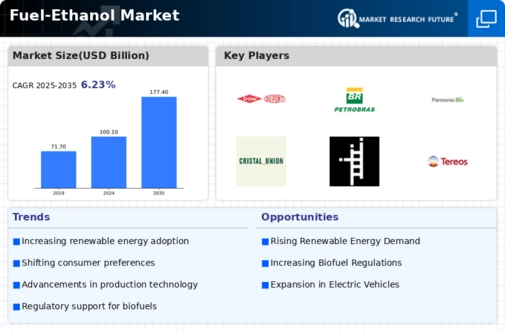

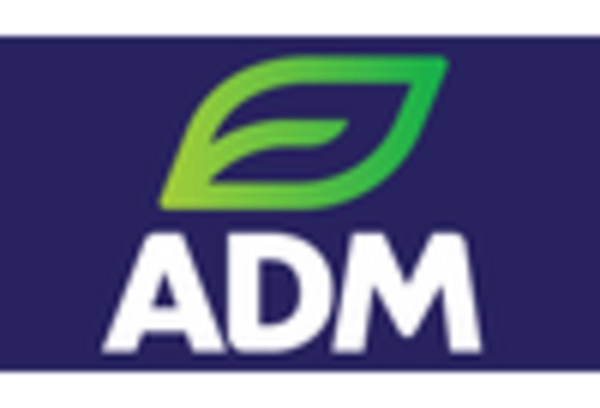
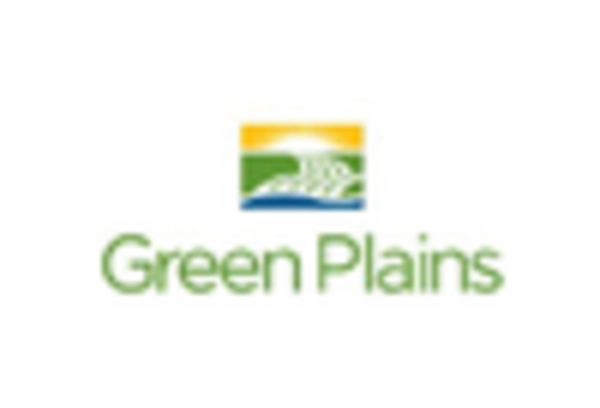
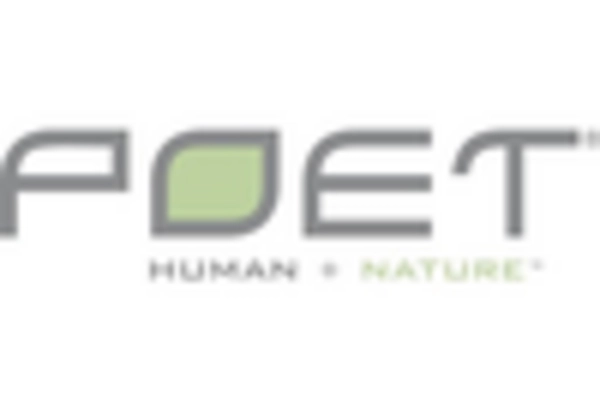
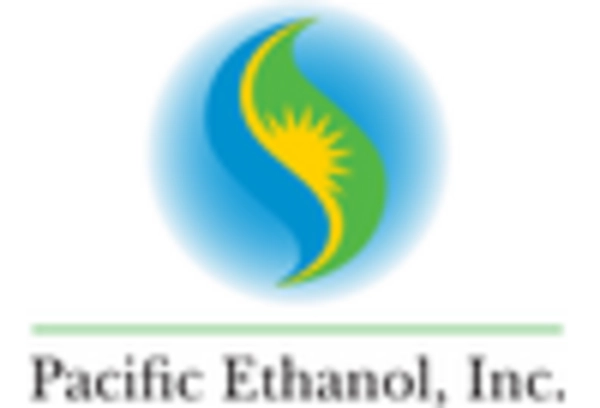



Leave a Comment